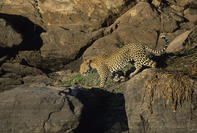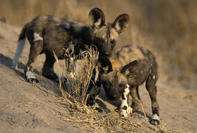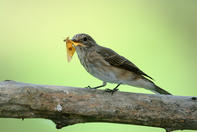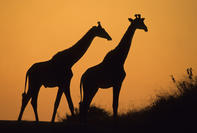The Kruger's Climate
In spring/summer (October to March), the subtropical Lowveld is hot and humid with daytime highs often hovering around 30 and rising up to 40 degrees.

This climatological dispensation reaches its height in January and February when the weather in the Kruger National Park can be downright beastly. Summer is also the rainy season and there will be sporadic thunderstorms and downpours across the park during these wet months.
However, the sun rises early and sets late, so the entrance gates are open for longer and you will have more time to drive around. The Lowveld winters (April to October) are mild and pleasant during the day, with clear blue skies. Mornings and evenings can be cold, however, and you should bundle up if you’re going out in an open game viewing vehicle because it can get pretty damn nippy after the sun sets. The chances of rain are slim during the dry season.
Best Game Spotting Season

In terms of game spotting, the best time to visit the park is late winter and early spring (July to October). The days are pleasant and the grass is low, so you can see further into the bush. The park is also dry in the winter, so the animals tend to congregate around the available water holes, making the game easier to spot. Of course, summer is nice too.
This is when the grass is long and luxuriant and nature is in full flower. The park is therefore much more colourful during the wet season, especially when compared to the limited palette of browns and khaki that characterise the park in winter. The breeding season begins in spring, offering lucky visitors the chance of witnessing a birth or spotting newly born babies. Autumn is the mating season and, if you’re discreet, you may see some action in the bushes.
Kruger’s Peak Times

Birders will have a fine time throughout the year, although the summer months (specifically December and January) are considered optimal. Do note, during the South African school holidays, the crowds are at their peak and the park can become quite unpleasant.
The park usually operates at capacity throughout the vacation month of December, and this leads to overcrowded camps, congested traffic and outbursts of road rage that would normally only occur in the urban jungle.
The number of day-trippers allowed into the park may also be limited at peak times, so arrive early or risk getting turned back. The winter season is also very popular with dedicated game spotters and retirees, so it’s always a good idea to book your accommodation well in advance.
Recommended Daily Routine

One Kruger National Park staffer told me that animals are just like us; they like to be comfortable and don’t enjoy wandering around in the heat of the day. So, whether you are a birder, game spotter or just a rest camp layabout, the ideal daily routine goes something like this: wake up early (before sunrise) and take yourself on a game drive soon after the rest camp gate opens.
The game is quite active in the cool mornings and this is when many of the best spots are made. Temperatures begin to rise as the sun climbs higher, so return to camp around nine or ten and chill out in the shade of your veranda or around the pool. Enjoy a relaxed lunch or have a snooze in the early afternoon, then get back in the car a couple of hours before sunset (when the game is once again active) for another round of spotting.
Evenings can be spent around a braai, at the rest camp’s restaurant or sitting on the stoep of your bungalow, drinking in the nocturnal symphony.
By David Fleminger There is a wide variety of accommodation in Kruger National Park options ranging from rest camps to luxury Kruger Park safari lodges....
There is a wide variety of accommodation in Kruger National Park options ranging from rest camps to luxury Kruger Park safari lodges.... Driving the length of the Kruger National Park offers some of the best wildlife viewing in Africa. The park has incredibly diverse fauna and...
Driving the length of the Kruger National Park offers some of the best wildlife viewing in Africa. The park has incredibly diverse fauna and...